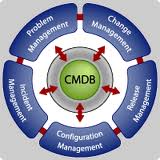Around 2 years ago I started this project, and I’m happy to see that all my work has given some good results.
I’ve received many articles by contributors and a lot of help in the corrections of the articles, I’ve published some of the things I’ve learned in my years as system administrator and installed and tested new softwares that probably I would not have seen otherwise.
It’s been an interesting journey so far and as first thing i must thank all the people that have helped with the website, but also all the readers that have left a comment, sent an email or just visited the website, THANKS !
And now, some statistical number, some curiosity and the most viewed articles for these 2 years.
Visitors and Country
In 2 years the site had 1.056.226 visitors (410.000 in the first year) for a total of 1.6 million pageviews, coming from 221 country and the following is the list of the top 12 countries per visitors:
- United States 257.466
- Italy 200.212
- United Kingdom 52.362
- Canada 41.713
- Germany 40.309
- India 32.003
- France 28.383
- Australia 23.749
- Netherlands 22.347
- Spain 20.246
- Brazil 17.854
- Czech Republic 13.555
The site is wrote in English and Italian, and so this explain the second place of Italy, one thing I’m really glad to see is that there are country from all around the world in this list, I’d have never thought to get this result 2 years ago, while i was thinking to write the Blog only in Italian.
As curiosity the top 3 city where Linuxaria is read are in order Rome, Milan and London.
Browser and Operating System
Firefox is steady at the first place followed by Chrome, Explorer is at the third place but with just the 5% of the users that use it.
When I look at the % of utilization of the browsers in the world usually I see very different numbers, I suppose that my website by its nature attracts users who already have to do with the open source world and so rarely they use IE.
Browser – Total Visitors – % of the total visitors
- Firefox 564.430 53,44%
- Chrome 311.061 29,45%
- Internet Explorer 58.158 5,51%
- Opera 40.552 3,84%
- Safari 38.935 3,69%
- Android Browser 13.814 1,31%
- Mozilla Compatible Agent 10.065 0,95%
- Mozilla 5.945 0,56%
- Opera Mini 3.935 0,37%
- Konqueror 3.517 0,33%
And this is the distribution of the visitors per operating system, it’s not a surprise to see at the first place Linux, but there are also a lot of Windows users visiting my site, maybe thinking to switch to the good side 🙂 ?
- Linux 538.317 50,97%
- Windows 409.408 38,76%
- Macintosh 63.429 6,01%
- Android 20.730 1,96%
- iPad 7.083 0,67%
- iPhone 6.001 0,57%
Top 5 posts
And these are the articles most read in 2 years:
5. 10 Easter Eggs in Linux
 Happy easter to all, what’s better than celebrate this holiday taking a look at what have hidden the programmers in our software ?
Happy easter to all, what’s better than celebrate this holiday taking a look at what have hidden the programmers in our software ?
A virtual Easter egg is an intentional hidden message, in-joke or feature in a work such as a computer program, web page, video game, movie, book or crossword. The term was coined—according to Warren Robinett—by Atari after they were pointed to the secret message left by Robinett in the game Adventure.
4. Understanding Nmap Commands: In depth Tutorial with examples
As we all know, Nmap (Network Mapper) is a stealth port scanner widely used by network security experts (including forensics & Pen-testing Experts). In this article we’ll see the different types of Nmap Scans, its techniques, understanding the purpose and goals of each scan , its advantages or disadvantages over other scanning tools, which could be better at evading firewalls & IDS (To a certain extent) and much more. In this first part, I have made my best to explain the basic scanning techniques, Host discovery options, port scanning options, techniques used in detecting Operating system & services running on the system.
3. The Best Filesystem for an external hard disk of 1TB with cross platform support.
Disks are becoming cheaper and so it’s becoming common to have on our desk an external (usually USB) hard drive with a size of 1TB or more.
Now, once that we bring at home our new gadget the first question for us is: “which Filesystem should i use with this big disk ?”
There are a lot of options and the main point is once again a simple question: do you want to use this disk with several different operating systems ?
Perhaps you have a computer with a dual-boot with a Windows operating system , or perhaps you plan to use that external hard drive also with your Macbook…or connect it to a TV.
Let’s take a look at some options you have to suit your needs.
2. How to run commands in the background
 Suppose you have a long-running task (for example, compiling a large program) that you need to run, but you also want to get some other work done. Linux lets you start a task in the background and keep on doing other things from the command prompt.
Suppose you have a long-running task (for example, compiling a large program) that you need to run, but you also want to get some other work done. Linux lets you start a task in the background and keep on doing other things from the command prompt.
We will see in this article how to send commands in the background, then return them to the foreground, and make sure that also closing the current shell or terminal the process doesn’t remains tied to the session but continue to work.
An alternative to these command is using screen, as read in a former article, but now let’s see the command bg and the special character &
1. 6 Open Source CMDB
 A fundamental item for those who work according to ITIL best practices is definitely CMDB.
A fundamental item for those who work according to ITIL best practices is definitely CMDB.
A configuration management database (CMDB) is a repository of information related to all the components of an information system. Although repositories similar to CMDBs have been used by IT departments for many years, the term CMDB stems from ITIL. In the ITIL context, a CMDB represents the authorized configuration of the significant components of the IT environment. A CMDB helps an organization understand the relationships between these components and track their configuration.
There are many commercial products that offer solutions that should cover every aspect of a company, but than you discover that these software are huge, difficult to manage and impossible to use and customize without the help of a consultant.
That is why today I will propose some open source software for create your CMDB.
Conclusions
I’m really happy on how is going this website and for the next year i promise to continue to post articles regarding Linux and open source in general, if you have a particular request on something you’d like to see, or you want to publish an article just post a comment here or send me an email at [email protected]
Popular Posts:
- None Found

Hi Riccardo!
My best wishes for your little anniversary!
My blog will be 2 years soon too!